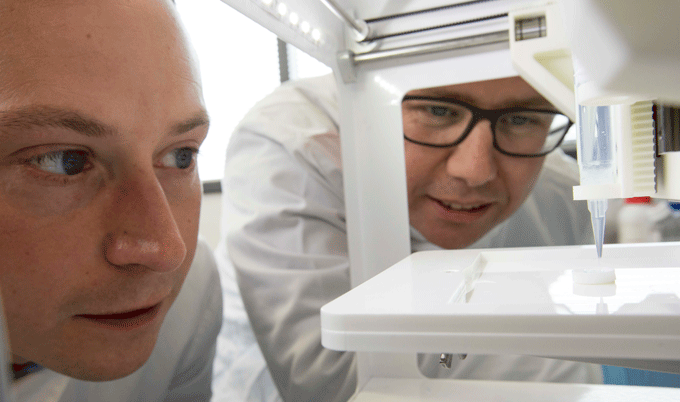At Newcastle University, scientists have developed a technique that could meet the demand of corneas in the medical industry. No need to recall the key role of the cornea in our vision.
However, let’s note that there is a significant lack of corneas for transplants. Statistics show that about 10 million people worldwide require surgery to prevent corneal blindness due to diseases such as trachoma. Furthermore, 5 million people are blind because of corneal scarring caused by burns, lacerations, abrasion or disease.
Researchers discovered that by combining human corneal stromal cells of a healthy donor with alginate and collagen, one can obtain a 3D printable solution called “bio-ink”. They made use of a low-cost 3D bio-printer to 3D print the solution which form the shape of a human cornea. The whole printing process just required 10 minutes.

The stem cells were then shown to culture – or grow. As far as technical specificities are concerned, researchers took into account the dimensions of a human cornea.
Che Connon, Professor of Tissue Engineering at Newcastle University, explained that the gel made of alginate and collagen enables to keep the stem cells alive while producing a material “which is stiff enough to hold its shape but soft enough to be squeezed out the nozzle of a 3D printer. This builds upon our previous work in which we kept cells alive for weeks at room temperature within a similar hydrogel. Now we have a ready to use bio-ink containing stem cells allowing users to start printing tissues without having to worry about growing the cells separately.”

In addition, the research demonstrates that it is now possible to build a cornea that can match a patient’s unique specifications.
Professor Connon added: “Our 3D printed corneas will now have to undergo further testing and it will be several years before we could be in the position where we are using them for transplants. However, what we have shown is that it is feasible to print corneas using coordinates taken from a patient eye and that this approach has potential to combat the world-wide shortage.”
For further information about 3D Printing, follow us on our social networks and subscribe to our newsletter!
Would you like to be featured in the next issue of our digital magazine? Send us an email at contact@3dadept.com
//pagead2.googlesyndication.com/pagead/js/adsbygoogle.js
(adsbygoogle = window.adsbygoogle || []).push({});





